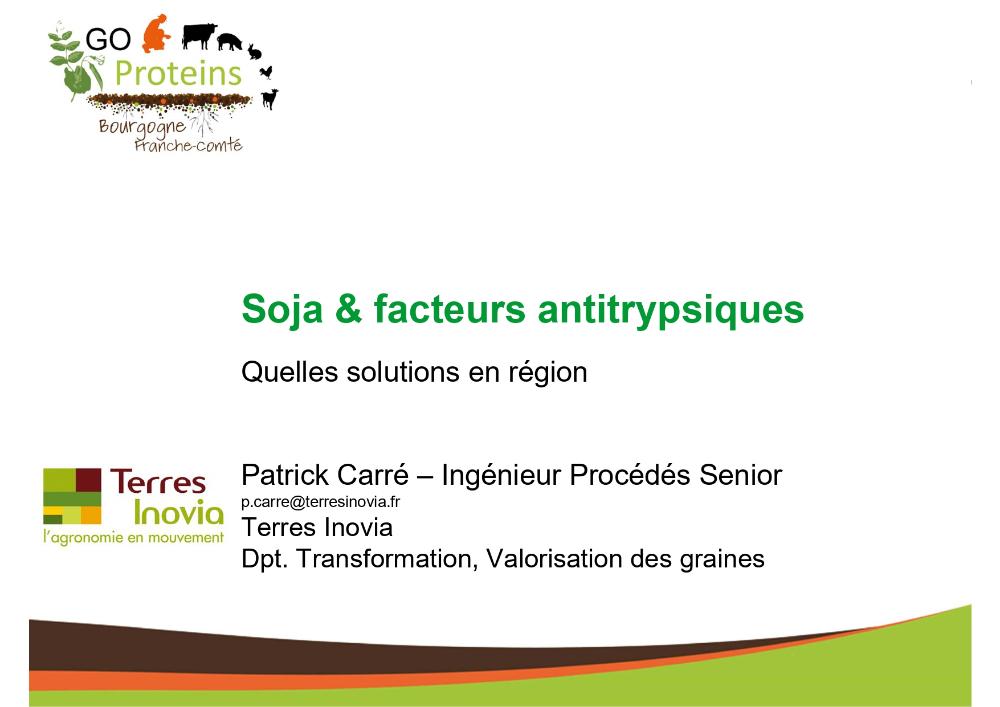Reducing antitryptic factors in soybeans through heat treatments
Reducing antitryptic factors in soybeans through heat treatments
A year ago, the webinar "What opportunities for a better match between supply and demand of plant proteins for animal feed?" was led by Go Proteins.
The presentations have recently been put online by the Regional Chamber of Agriculture of Burgundy-Franche-Comté. This is an opportunity to discover or review the presentation by Patrick Carré, expert in seed processing at Terres Inovia, on the reduction of anti-tryptic factors in soybeans by cooking processes.
Overview of anti-nutritional factors in soybeans
In 15 minutes, the video recalls the nature of anti-nutritional factors in soybeans, their effects on monogastric animals and provides an overview of the inactivation methods used to limit their harmfulness.
Indeed, if poorly controlled, anti-tryptic factors reduce the availability of amino acids in the protein. For example, soybean meal with residues of 7 IU/mg of antitryptic activity resulted in a 180g/d reduction in piglet growth compared to piglets fed well-cooked meal.
It also discusses short circuit processing without oil extraction (toasting, extrusion) and the techniques available on the market.
A good viewing to all! (click on the image below)


